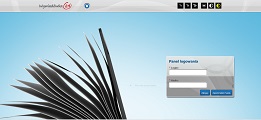



|
Szanowni Rodzice! troska o dobrostan oraz zdrowie uczniów i uczennic to priorytet dla Ministerstwa Edukacji Narodowej i Ministerstwa Zdrowia. Aby uchronić dzieci przed zagrożeniami – także ciężkimi chorobami powodowanymi przez ludzki wirus brodawczaka (HPV) – prowadzona jest druga odsłona akcji umożliwiająca szczepienie w szkołach przeciw temu wirusowi. Powszechny Program Szczepień przeciw HPV dotyczy dzieci w wieku od 9 do 14 lat. Organizacja szczepień przeciw HPV w szkołach ma na celu zwiększenie dostępności szczepień oraz zwiększenie wiedzy zdrowotnej wśród uczniów i rodziców na temat HPV i znaczenia szczepień ochronnych w zapobieganiu występowania nowotworów (program ten stanowi element Narodowej Strategii Onkologicznej na lata 2020-2030). Wszystkie istotne materiały edukacyjne w zakresie szczepień przeciw HPV dostępne są pod adresem: https://www.gov.pl/web/zdrowie/hpv Dedykowana strona zawiera m.in. - List Ministra Edukacji i Ministra Zdrowia do rodziców - przewodnik dla rodziców i lekarzy- Jak rozmawiać z nastolatkiem o szczepieniach przeciw HPV - przewodnik po szczepieniach przeciw HPV dla rodziców nastolatków - HPV prezentacja - wzory oświadczeń i deklaracji oraz ulotki szczepionek
Rodzice chcący zaszczepić dziecko proszeni są o kontakt z pielęgniarką szkolną tel. 17 - 787 51 22 |
|
Załączniki:
|
Wywiadówki odbędą się 11.12.2025 r. (czwartek)
według poniższego harmonogramu.
Po krótkim spotkaniu na sali gimnastycznej zapraszamy do n/w sal lekcyjnych.
|
Klasa |
Godzina |
Sala |
|
1a |
16.15 Sala gimnastyczna |
21 |
|
1b |
23 |
|
|
2a |
25 |
|
|
2b |
22 |
|
|
3a |
18 |
|
|
3b |
24 |
|
|
4a |
17 |
|
|
4b |
3 |
|
|
5a |
17.00 Sala gimnastyczna |
5 |
|
5b |
19 |
|
|
6a |
15 |
|
|
6b |
16 |
|
|
7a |
7 |
|
|
7b |
18 |
|
|
8a |
3 |
|
|
8b |
9 |
W piątek 7 listopada br., o symbolicznej godzinie 11:11 zabrzmiał w naszej szkole „Mazurek Dąbrowskiego”

Konkurs plastyczny ”Mój ulubiony bohater z bajki”
I miejsce: Aurelia Maćkowska kl. 2b
II miejsce: Nikodem Mróz kl. 3b
Jakub Kiełb kl. 3a
III miejsce: Zuzanna Sztuka kl. 1b
Adam Małek kl. 1b
Wyróżnienia:
Ewa Załucka kl. 1a
Wiktoria Załucka kl. 1a
Paulina Augustyn kl. 3a
Hanna Koń kl. 2b
Konkurs na hasło lub plakat promujący bibliotekę, książkę lub czytanie
I miejsce: Adam Maćkowski kl. 4a
II miejsce: Iga Żybula kl. 7a
III miejsce: Antonina Gorbaczewska kl. 5b
Wyróżnienia: Leon Świerczek kl. 4a
Cezary Sztuka kl. 6b
Zwycięzcom gratulujemy!



Podkategorie
Joomla!
Extensions
The Joomla! content management system lets you create webpages of various types using extensions. There are 5 basic types of extensions: components, modules, templates, languages, and plugins. Your website includes the extensions you need to create a basic website in English, but thousands of additional extensions of all types are available. The Joomla! Extensions Directory is the largest directory of Joomla extensions.
Components
![]() Components are larger extensions that produce the major content for your site. Each component has one or more "views" that control how content is displayed. In the Joomla administrator there are additional extensions such as Menus, Redirection, and the extension managers.
Components are larger extensions that produce the major content for your site. Each component has one or more "views" that control how content is displayed. In the Joomla administrator there are additional extensions such as Menus, Redirection, and the extension managers.
Modules
![]() Modules are small blocks of content that can be displayed in positions on a web page. The menus on this site are displayed in modules. The core of Joomla! includes 24 separate modules ranging from login to search to random images. Each module has a name that starts mod_ but when it displays it has a title. In the descriptions in this section, the titles are the same as the names.
Modules are small blocks of content that can be displayed in positions on a web page. The menus on this site are displayed in modules. The core of Joomla! includes 24 separate modules ranging from login to search to random images. Each module has a name that starts mod_ but when it displays it has a title. In the descriptions in this section, the titles are the same as the names.
Content Modules
Content modules display article and other information from the content component.
User Modules
User modules interact with the user system, allowing users to login, show who is logged-in, and showing the most recently registered users.
Display Modules
These modules display information from components other than content and user. These include weblinks, news feeds and the media manager.
Utility Modules
Utility modules provide useful functionality such as search, syndication and statistics.
Navigation Modules
Navigation modules help your visitors move through your site and find what they need.
Menus provide your site with structure and help your visitors navigate your site. Although they are all based on the same menu module, the variety of ways menus are used in the sample data show how flexible this module is.
A menu can range from extremely simple (for example the top menu or the menu for the Australian Parks sample site) to extremely complex (for example the About Joomla! menu with its many levels). They can also be used for other types of presentation such as the site map linked from the "This Site" menu.
Breadcrumbs provide users with information about where they are in a site.
Park Site
Park Blog
Here is where I will blog all about the parks of Australia.
You can make a blog on your website by creating a category to write your blog posts in (this one is called Park Blog). Each blog post will be an article in that category. If you make a category blog menu link with 1 column it will look like this page, if you display the category description then this part is displayed.
To enhance your blog you may want to add extensions for comments, interacting with social network sites, tagging, and keeping in contact with your readers. You can also enable the syndication that is included in Joomla (in the Integration Options set Show Feed Link to Show and make sure to display the syndication module on the page).
Photo Gallery

These are my photos from parks I have visited (I didn't take them, they are all from Wikimedia Commons).
This shows you how to make a simple image gallery using articles in com_content.
In each article put a thumbnail image before a "readmore" and the full size image after it. Set the article to Show Intro Text: Hide.
Fruit Shop Site
Growers
We search the whole countryside for the best fruit growers.
You can let each supplier have a page that he or she can edit. To see this in action you will need to create a user who is in the suppliers group.
Create one page in the growers category for that user and make that supplier the author of the page. That user will be able to edit his or her page.
This illustrates the use of the Edit Own permission.









